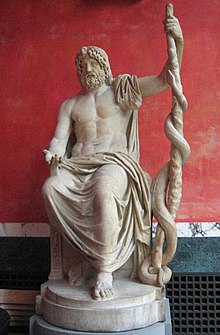
The Medical community as used in this article refers to medical institutions and services offered to populations under the jurisdiction of the late Roman Republic and the Roman Empire. The Medical services of the Roman Republic and the early Roman Empire were adopted from ancient Greece. It was first imported from Greece through Greek colonies in Magna Graecia and the Etruscan civilization. After the Roman conquest of Greece, enslaved Greeks brought more Greek medical knowledge to Rome. In 219 BCE a surgeon named Archagathus traveled from the Peloponnesus to Rome. He became a citizen and purchased a taberna near a crossroads. This became the first officina medica. Previously, the pater familias was responsible for the medical art in early Rome. Physicians in ancient Rome would take the Hippocratic Oath. Doctors would begin their appointments with patients by stating "si vales valeo," which translated to "if you are well I am well." Physicians were often wealthy. Augustus' physician, Antonius Musa, received a salary of 30,000 sesterces. Doctors would also serve in the Roman military and treat injured soldiers.
© MMXXIII Rich X Search. We shall prevail. All rights reserved. Rich X Search
